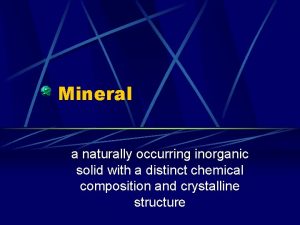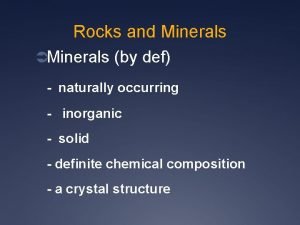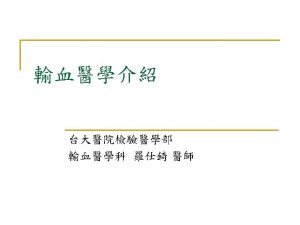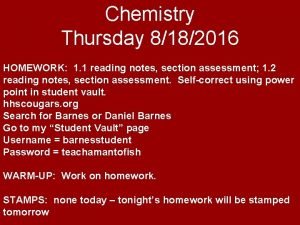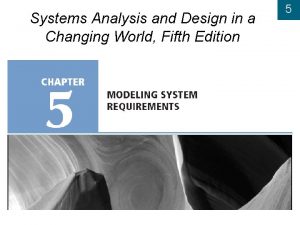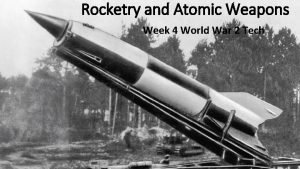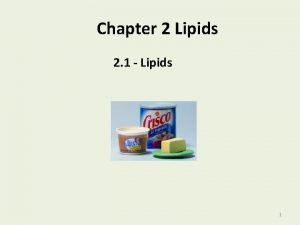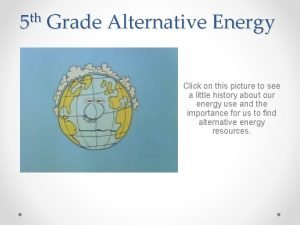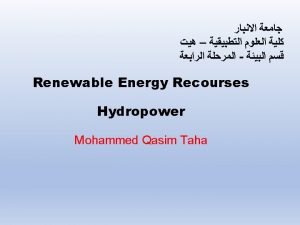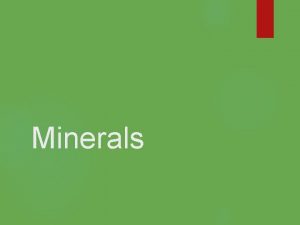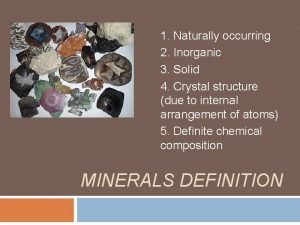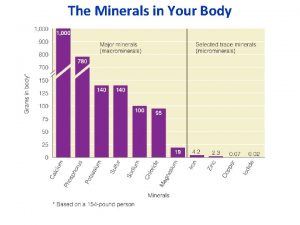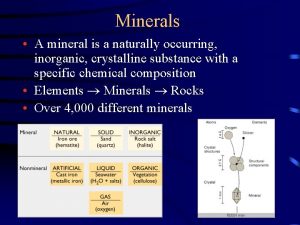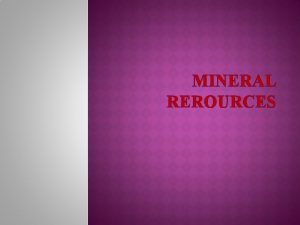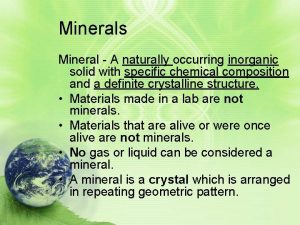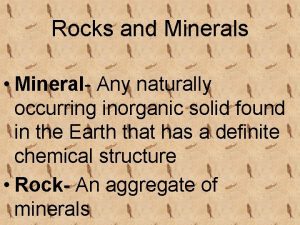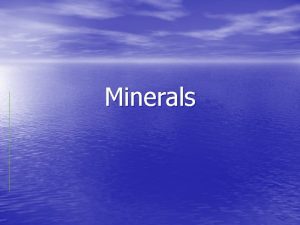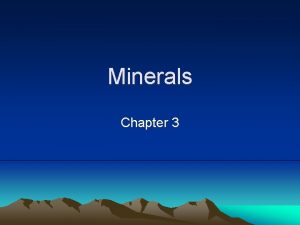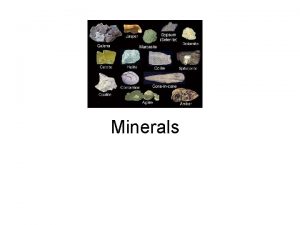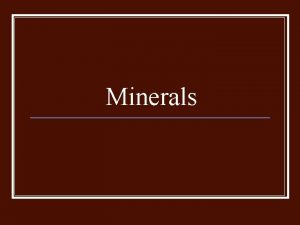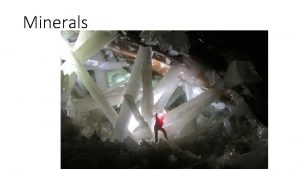MINERALS A MINERAL is a naturally occurring inorganic












- Slides: 12

MINERALS A MINERAL is a naturally occurring, inorganic solid, consisting of either a single element or compound, with a definite chemical composition (or varies within fixed limits), and a systematic internal arrangement of atoms.

MINERALS Useful as tools Improve quality of life Important in nutrients Many minerals in the body Useful and important in agriculture

MINERALS MINERAL CHEMISTRY Minerals are composed of elements in specific proportions. Elements cannot be broken down into any smaller units and still be recognizable. Atoms of one or more elements combine in specific proportions to produce compounds. Specific proportions are expressed by the compound’s chemical formula. HALITE QUARTZ Na. Cl Si. O 2

MINERALS MINERAL CHEMISTRY Atoms are extremely small. Atoms are composed of three particles: Protons and Neutrons in the nucleus of the atom. Electrons in energy levels around the nucleus. Protons have a positive charge. Electrons have a negative charge. Neutrons are neutral.

MINERALS ATOMIC CHEMISTRY ATOMIC MASS of an elements is the total number of protons and neutrons in the nucleus of the atom. ATOMIC NUMBER is the total number of protons in the nucleus of the atom. Always the same number of protons in every atom of the same element. Number of neutrons in the nucleus can vary. Variation in the number of neutrons in the same element produces ISOTOPES of that element.

MINERALS ATOMIC CHEMISTRY Isotopes of Oxygen Always 8 protons in the nucleus. Oxygen has atomic number of 8 on the Periodic Table. 16 O has 8 protons and 8 neutrons. 17 O has 8 protons and 9 neutrons. 18 O has 8 protons and 10 neutrons.

MINERALS ATOMIC CHEMISTRY Some isotopes have very unstable nuclei and those break down spontaneously. This reaction is termed RADIOACTIVITY. Generally a large amount of heat is produced in the reaction.

MINERALS ATOMIC CHEMISTRY The number of electrons contained in an atoms is the same as the number of protons. Makes the charge on the atom neutral. Electrons are held in shells or ENERGY LEVELS around the nucleus. Atoms can give up or take electrons depending on the number in the outermost energy level.

MINERALS BONDING For elements to combine or BOND to form compounds, electrons must be lost, gained or shared between atoms. Atoms are stable when all the spaces in the outer energy level are filled with electrons. Innermost energy level requires two electrons to be full. All other energy levels require eight electrons to be full. Atoms with 1 -2 electrons in the outer shell tend to give up electrons. Atoms with 5 -6 electrons in the outer shell tend to take electrons. Atoms with 3 -5 electrons in the outer shell tend to share electrons. If all energy levels are already filled, no change is possible. These elements are said to be INERT (like He, Ne, Ar).

MINERALS TYPES OF BONDING IONIC BONDING Atoms that have lost or gained 1 or more electrons become charged particles and IONS are formed. If electrons are gained by an atom a NEGATIVE ION exists. If electrons are lost by an atom a POSITIVE ION exists. When elements bond by the exchange of electrons IONIC BONDING exists. Na+ Cl-

MINERALS TYPES OF BONDING COVALENT BONDING Atoms that have 3 -5 electrons in the outer energy level tend to share electrons with other atoms to form compounds. Both atoms fill their outer energy levels by sharing electrons. This produces a COVALENT BOND. Covalent bond can be extremely strong. Sharing can be between the same element as in Diamond.

MINERALS TYPES OF BONDING METALLIC BONDING occurs when electrons are shared. Sharing tends to be between many atoms. Electrons move freely from atom to atom. Allows for high conductivity of electricity in metallic compounds.
 Naturally occurring inorganic solid material
Naturally occurring inorganic solid material Minerals def
Minerals def H
H Largest naturally occurring element
Largest naturally occurring element Is a naturally occurring association among specific things
Is a naturally occurring association among specific things Largest naturally occurring element
Largest naturally occurring element Naturally occuring fatty acids
Naturally occuring fatty acids Advantages and disadvantages of renewable resources
Advantages and disadvantages of renewable resources Naturally occurring areas of hydrothermal resources
Naturally occurring areas of hydrothermal resources Naturally occurring areas of hydrothermal resources
Naturally occurring areas of hydrothermal resources A narrow channel or slab of a mineral
A narrow channel or slab of a mineral Inorganic mineral definition
Inorganic mineral definition Enzim
Enzim
